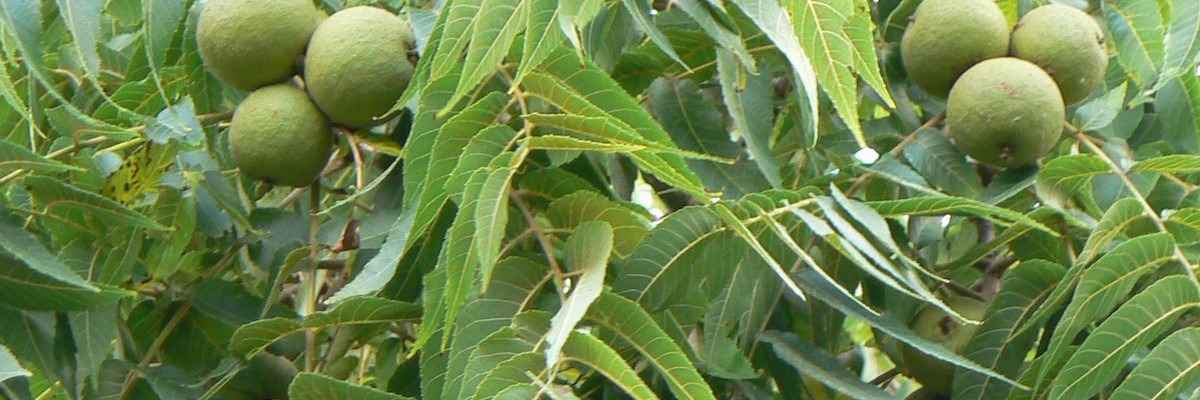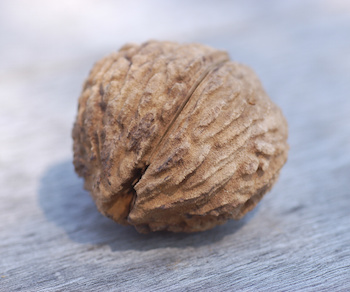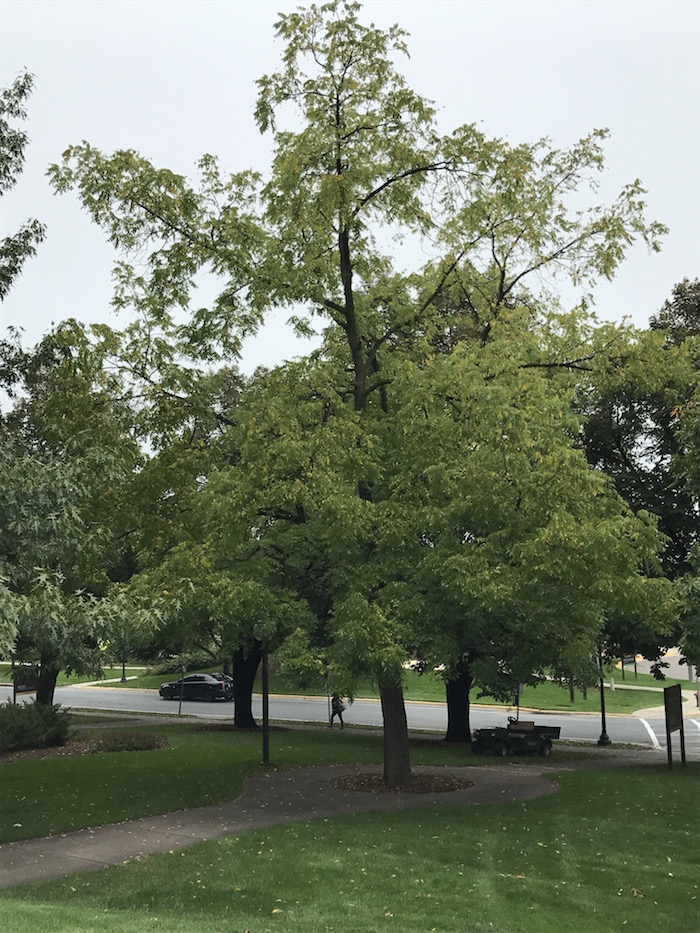
Description:
Black walnut is a medium to large sized species known for its excellent lumber properties and edible nuts. Leaves are alternate and compound, with 15-20 long, narrow, pointed, and toothed green leaflets. The terminal, or last leaflet is often smallest or missing; the largest leaflets are towards the middle of the leaf. Flowers are either male or female, and are unremarkable catkins. Female flowers develop into a fleshy green fruit, around 1-2” wide. These fruit often develop in clusters of 2-3, and eventually dry and crack in the fall. Inside is a large, edible nut.
Black walnut wood doesn’t shrink or warp, making it one of the most valuable Minnesota timber sources. The wood can be used for paneling, furniture, and lumber. The fruit is rare and considered a gourmet delicacy to some, making it a lucrative tree to grow. Chippewa and Cherokee peoples also used black walnut bark for dyes, while several other tribes used different parts of the tree medicinally.
As a landscape tree, black walnut can be difficult. The species is allelopathic, produces a compound known as juglone that is toxic to many other plant species. This toxin inhibits the growth of other plant species, making it difficult to plant other species under the canopy or nearby a black walnut. See below for more information about what species can tolerate juglone.
Issues:
A major disease affecting black walnut is called Thousand Canker Disease. It is a fungal disease carried by the walnut twig beetle. Black walnut is also susceptible to numerous other hardwood issues such as fusarium or mistletoe.
Other Resources:
Morton Arboretum - Allelopathy
Photo Credit: Public Domain GFDL





